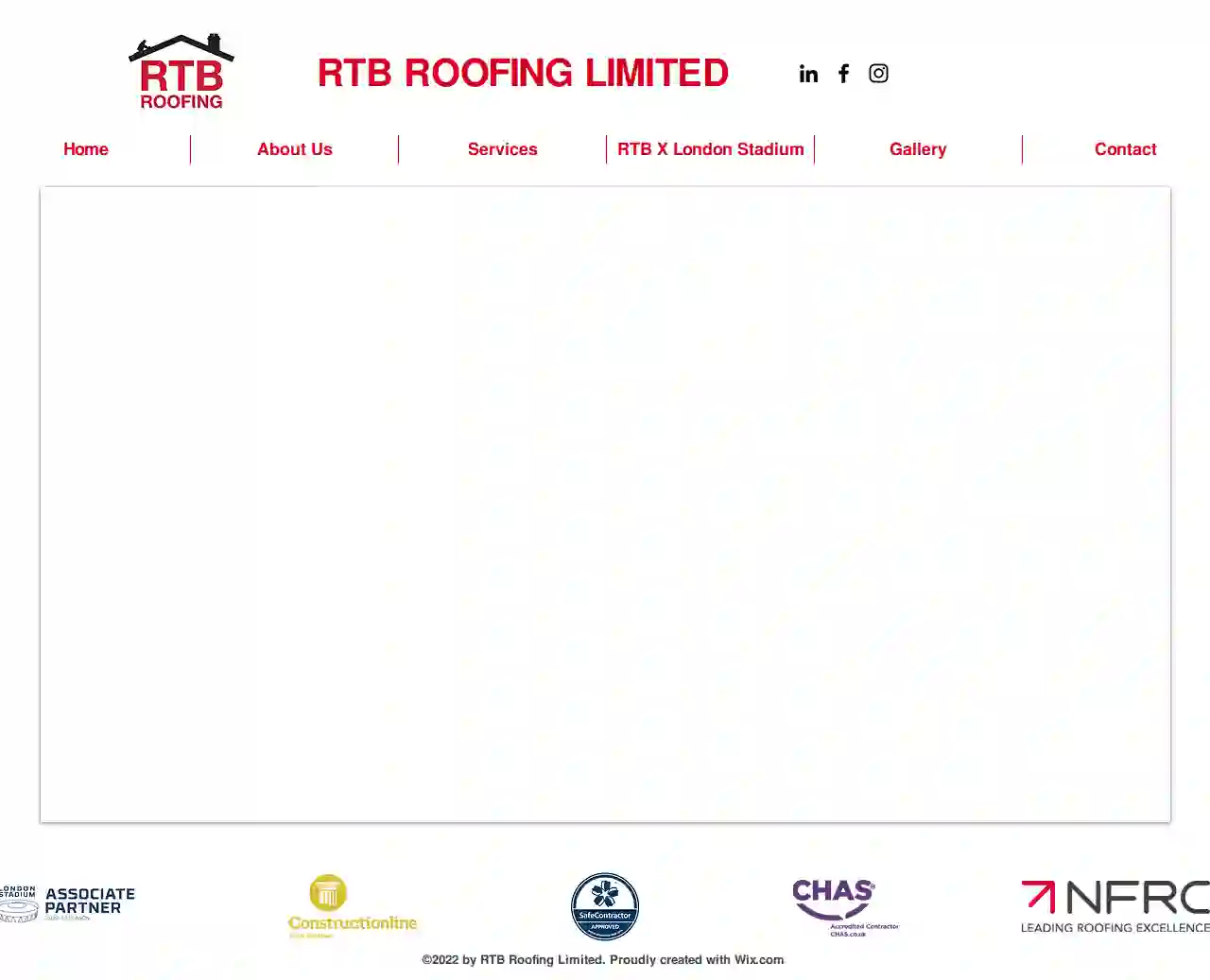Roofing Companies Bolton
Find top Roofing Contractor in Bolton
Receive multiple Roofing Contractor quotes for your project today! Compare profiles, reviews, accreditations, portfolio, etc... and choose the best offer.

One Stop Roofing Shrewsbury - Flat Roofing & Roof Repairs
Lower House Farm, Sidbury, Bridgnorth, WV16 6PY, GBAt One Stop Roofing, our specialization lies in flat roof installations, with a particular expertise in EPDM rubber roofs, rubber, and fiberglass. We take pride in offering a comprehensive range of services, including roof installation, repairs, and maintenance. Additionally, we have extensive knowledge and experience in handling fascia's, soffits, roof lanterns, skylights and guttering, ensuring that all your roofing needs are taken care of under one roof. We are a family business with over 35 years’ experience in the roofing trade, specializing in rubber and fibreglass roofing, as well as all types of roof and chimney repairs. Our team supplies and fits new build roofs, flat roofs, lantern and warm roofs - all using the best materials and construction to ensure you are dry and warm, no matter what the weather.
- Services
- Why Us?
- Accreditations
- Our Team
- Testimonials
- Gallery
Get Quote
The Fascia Division
59 reviewsLeigh, GBThe Fascia Division is a specialist installer of replacement fascias, soffits, guttering, and cladding. We offer a 10-year installation guarantee and are certified preferred installers for Hardie Plank cladding. Our team of experienced craftsmen provides high-quality installations, and we don't use reps or high-pressure selling techniques. We offer free no-obligation fixed quotations and our work is covered by a 10-year installation warranty with an optional IBG (Insurance Backed Guarantee).
- Services
- Why Us?
- Accreditations
- Our Team
- Testimonials
- Gallery
Get Quote
Four Seasons Roofing & Building Ltd
4.17 reviews4 Capricorn Centre, Cranes Farm Road, Basildon, SS14 3JJ, GBRoofing and Building Specialists. Welcome to Four Seasons Roofing Building Ltd At Four Seasons Roofing Building, we provide exceptional domestic and commercial (Industrial) roofing services in Brentwood, Essex, London, and throughout the M25 corridor. Our professional and certified roofers have expert knowledge and years of experience in all aspects of roofing services. From brand new installations to roof repairs and maintenance, we follow a set of very high standards and complete roofing projects on budget and on time.Although we can undertake any roofing requirements, we are considered the rubber roofing specialists throughout the roofing industry.
- Services
- Why Us?
- Gallery
Get Quote
H20 roofing and building ltd
N/A, GBH2O Property Maintenance is a family-run, recommended and vetted business with over 25 years of experience in providing reliable roofing and building solutions. We pride ourselves on delivering high-quality workmanship and customer satisfaction, ensuring your roofing needs are met first time, every time. Our team of expert roofers are professionally trained to meet the highest quality standards and provide tailor-made solutions accredited by leading manufacturers. We offer a comprehensive range of services, including roof repairs, flat roof installations, guttering and fascia services, Velux roof windows, moss removal, exterior painting, and chimney services. We use top-quality materials from well-known manufacturers and guarantee our work. We are committed to providing cost-effective solutions and a stress-free experience for our clients.
- Services
- Why Us?
- Accreditations
- Our Team
- Testimonials
- Gallery
Get Quote
Universal Contracting Limited
4.58 reviews35 Chequers Court Brown Street, Salisbury, 35 Chequers Court Brown Street Salisbury, SP1 2AS, GBUniversal Contracting Ltd are industrial and commercial property developers based in Romsey, Hampshire. We are specialists in: ✓ Commercial Washrooms ✓ Commercial Maintenance ✓ Roofing Contractors ✓ Flooring Contractors We are commercial property contractors and experts in all aspects of industrial and commercial property refurbishment with a broad range of experience and expertise, covering all building works and construction sectors. We operate throughout Dorset, Surrey and other counties of Southern England and London.
- Services
- Why Us?
- Testimonials
- Gallery
Get Quote
W S Wyatt & Son
3.73 reviews26 Heath Road, Salisbury, SP2 9JS, GBWS Wyatt and Son Roofing Contractors is a roofing company offering roofing services in Salisbury and throughout the South West. Our services include: Re-roofing and tiling, Installing or repairing slating, fascias, guttering and leadwork. WS Wyatt and Son Roofing Contractors also undertakes all aspects of roofing services. We install all varieties of roof windows e.g. Velux, Fakro, Ubink and Colt Rotol. We are the approved installer for Wiltshire for the monodraught “sunpipe”. We also install sky tunnels and sun tubes. All our roofing services are carried out to the highest possible standard, ensuring complete customer satisfaction. Quality service from experienced craftsmen! Whatever the service you are looking for, you can be certain we will be able to assist. Our Salisbury based team of skilled craftsmen are always on hand to deliver a prompt and efficient service. In addition, they will be sure to leave the premises in a clean and tidy fashion – meaning you do not have to tidy up after us!
- Services
- Why Us?
- Our Team
- Testimonials
- Gallery
Get Quote
Roofline Roofing & Cladding Ltd
4.821 reviews293 The Chase, Benfleet, SS7 3DN, GBRoofline is a family-run business with decades of experience installing and repairing domestic roofs. Based in Benfleet, Essex, they pride themselves on their local reputation and commitment to high-quality workmanship. As time-served tradesmen, they offer free, no-obligation quotes with no hidden costs. Roofline ensures projects are completed on time, within budget, with minimal disruption, and to the exacting standards they are known for. They specialize in leak detection and prevention, and their team is dedicated to providing a professional, friendly, and reliable service.
- Services
- Why Us?
- Accreditations
- Our Team
- Testimonials
- Gallery
Get Quote
RTB Roofing Limited
4.26 reviewsGBRTB Roofing Limited is a roofing company based in London, UK. We are a family-run business with over 20 years of experience in the roofing industry. We offer a wide range of roofing services, including new roof installations, roof repairs, and roof maintenance. We are fully insured and accredited by the National Federation of Roofing Contractors.
- Services
- Why Us?
- Accreditations
- Gallery
Get Quote
AK Roofing Manchester
56 reviews54 Hulme Road, Leigh, WN7 5BT, GBAK Roofing is a premier roofing company serving Manchester and the surrounding areas. We are a family-run business with over 15 years of experience in the roofing industry. We pride ourselves on providing high-quality workmanship, competitive rates, and excellent customer service. Our team of skilled roofers is fully qualified and insured to handle all types of roofing projects, from small repairs to complete roof replacements. We offer a wide range of roofing services, including flat roof repairs, chimney repairs, gutter repairs, leadwork and guttering, fascia and soffit installation, drone roof surveys, Velux window installation, pest protection, and roofing finance. We are committed to providing our customers with the best possible roofing solutions to meet their needs and budget.
- Services
- Why Us?
- Accreditations
- Our Team
- Testimonials
- Gallery
Get Quote
Proteus Waterproofing
4.410 reviewsBrook Road Industrial Estate, 21a Sirdar Road, Rayleigh, SS6 7XF, GBWe are Proteus Waterproofing, a single source systems provider, delivering the total waterproofing and protection package. We are unique with the ability to offer innovative products alongside more traditional waterproofing systems, giving specifiers, contractors and building owners a real choice. We offer solutions with comprehensive technical support throughout, guarantees where requested, supported by BBA Accreditation on project completion. Proteus Waterproofing has an enviable reputation for delivering innovative products and systems for every type of design situation. Call us today and discover how our technical team can help with your next project. Check out advanced systems such as Proteus Cold Melt® which is proven to significantly reduce time on site, especially in new build situations with green concrete and much, much more… Proteus Waterproofing will always go the extra mile, offering more services. Our in-house technical team have a combined industry knowledge of over 250 years. We offer solutions from roof design at the outset of the project, with comprehensive technical support throughout, guarantees where requested, supported by BBA Accreditation on project completion. Experience the power of precision with Proteus Waterproofing, the UK's fastest-growing provider of waterproofing solutions, now available on the National Building Specification (NBS) platform. Raising the benchmark in waterproofing
- Services
- Why Us?
- Accreditations
- Gallery
Get Quote
Over 12,314+ Roofers in our network
Our roofing pros operate in Bolton and surroundings!
Roofyng.co.uk has curated and vetted Top Roofing Contractors in and around Bolton. Find a trustworthy business today.
Frequently Asked Questions About Roofing Companies
- Safety First: Avoid going onto the roof during a storm, as it's dangerous.
- Document the Damage: Take photos and videos of the damage for insurance purposes.
- Contact Your Insurance Company: Report the damage to your insurance company as soon as possible to initiate a claim.
- Temporary Repairs: If safe, address any immediate leaks using buckets or tarps to minimize further damage.
- Contact a Roofing Contractor: After the storm, have a qualified roofing contractor inspect the roof and provide a repair estimate.
- Home Improvement Loans: Offered by banks or credit unions.
- Home Equity Loans or Lines of Credit: Use your home's equity as collateral.
- Government Programs: Check for energy efficiency rebates or grants.
- Contractor Financing: Some roofing companies offer financing plans.
What should I do if my roof is damaged in a storm?
What is fascia, and why is it important?
What is the difference between a roofer and a general contractor?
Roofer: Specializes in roof installations, repairs, and replacements. They have expertise in roofing materials, techniques, and safety practices specific to roofing.
General Contractor: Oversees and manages entire construction projects, including hiring and coordinating subcontractors, such as roofers, electricians, plumbers, etc. They handle overall project planning, scheduling, and budgeting.
For roofing projects, it's generally best to hire a roofing contractor who specializes in roof work.
How can I get financing for a new roof?
What should I do if my roof is damaged in a storm?
- Safety First: Avoid going onto the roof during a storm, as it's dangerous.
- Document the Damage: Take photos and videos of the damage for insurance purposes.
- Contact Your Insurance Company: Report the damage to your insurance company as soon as possible to initiate a claim.
- Temporary Repairs: If safe, address any immediate leaks using buckets or tarps to minimize further damage.
- Contact a Roofing Contractor: After the storm, have a qualified roofing contractor inspect the roof and provide a repair estimate.
What is fascia, and why is it important?
What is the difference between a roofer and a general contractor?
Roofer: Specializes in roof installations, repairs, and replacements. They have expertise in roofing materials, techniques, and safety practices specific to roofing.
General Contractor: Oversees and manages entire construction projects, including hiring and coordinating subcontractors, such as roofers, electricians, plumbers, etc. They handle overall project planning, scheduling, and budgeting.
For roofing projects, it's generally best to hire a roofing contractor who specializes in roof work.
How can I get financing for a new roof?
- Home Improvement Loans: Offered by banks or credit unions.
- Home Equity Loans or Lines of Credit: Use your home's equity as collateral.
- Government Programs: Check for energy efficiency rebates or grants.
- Contractor Financing: Some roofing companies offer financing plans.